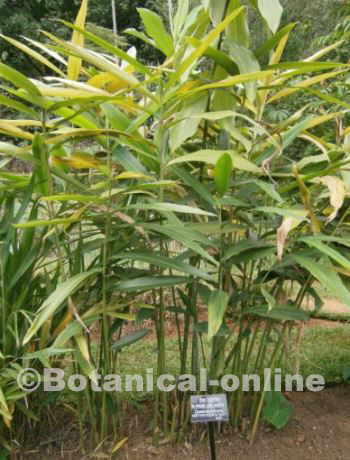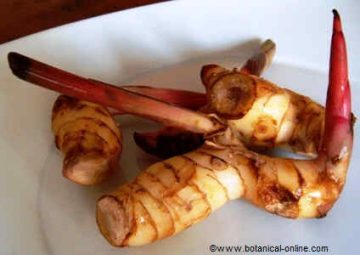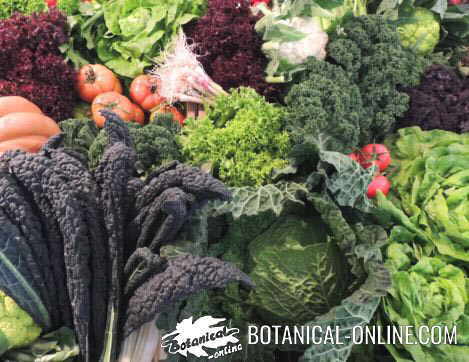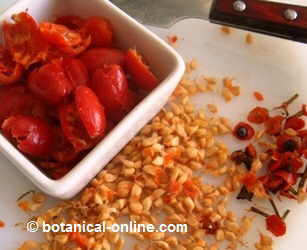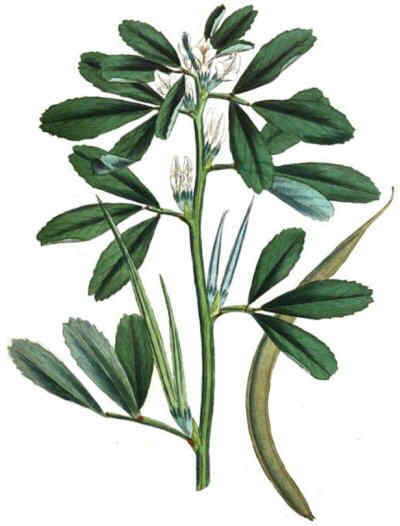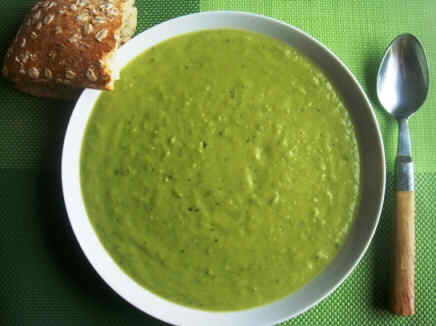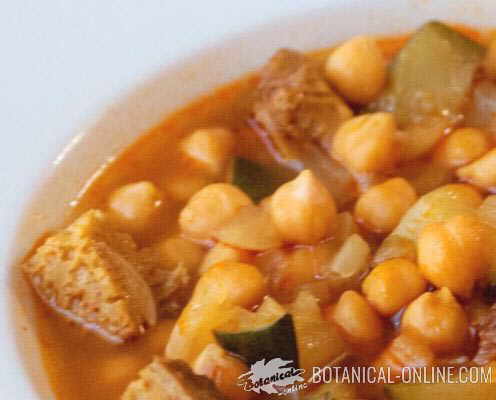Contents
Greater galangal care (Alpinia galanga)
 Characteristics
Characteristics

Greater galangal plant Perennial plant of 1.8 – 2m, which is traded for its rhizomes, with a very penetrating aroma.
- Thin rhizomes, between 2.5 and 10cm. long and thick as a thumb. Color of the skin yellowish-reddish and bright yellow inside.
- Leaves are oblong-lanceolate, entire, with an acuminate apex, glabrous and between 30 and 60cm long. long.
- Inflorescence in racemes. Zygomorphic flowers, white and purple.
- Fruit in globular or ovoid capsule.
 Climate
Climate
- It is a tropical plant that can grow at altitudes of up to 1,400m.
- Greater galangal is a plant adapted to live under the canopy of tropical forest trees. It grows in full sun or semishade.
- Greater galangal prefers loamy and sandy soils, with good drainage. Waterlogging should be avoided so that the tubers are not damaged.
- Soil reaction: pH 6 to 7.8.
 Propagation
Propagation
The plant reproduces by rhizomes, by division of clumps or by seeds.
Reproduction by rhizomes

Photograph of greater galangal It consists of a type of asexual reproduction in which a rhizome of an adult plant is planted. This is developed in another location to form a new plant.
- It is an economical and fast technique to obtain cardamom productions in approximately 2 years, half the time of seed reproduction.
- As a drawback, this technique allows you to be more susceptible to diseases.
Shrub division
It consists of dividing the different clumps of the adult plant, from the stem to the root, to transplant them again and that forms a new plant.
Irrigation
- Keep the soil always moist, avoid puddles.
 Diseases and pests
Diseases and pests
This plant is resistant to pests and diseases due to its natural antibiotics. Its introduction as a pest control in some types of crops is being studied.
![]() More information on greater galangal
More information on greater galangal

